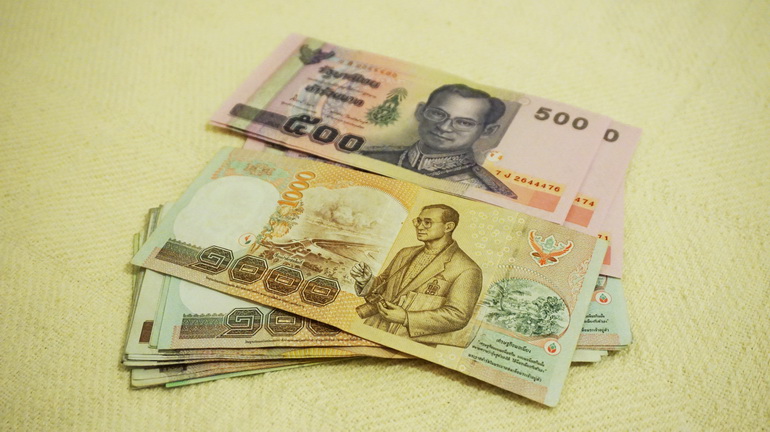Thai baht, "Baht" redirected here, is the currency of Thailand. The Thai baht is originated from a traditional unit of mass that of the value of silver of corresponding weight; and the term “Ngoen” is Thai for silver; Ngoen is hence the general term for money. For Thai people, money was considered as the symbol of civilization. Money itself, reflected belief, faith in religion, culture, customs and traditions of each era and also act as a significant record in the development and history of Thailand.

Prior to the first century and long before the adoption of Thai baht with value of silver in unit of mass, human trades goods by bartering for products of similar value. The evolution on money to be used as a medium of exchange and to make payment began, somehow, when the buyers and sellers differed in their assessments of value and in their requirements. From the days of barter trade, ancient beads, seeds, bracelets pebbles, and Roman copper coins were used as a medium of exchange around 200 – 300 BC (before 1st A.D. Century). From the first century onward, various forms of metallic coins were the money used as a medium of exchange. Thus, the metallic coins of Funan Kingdom and Dvaravati coins made their appearance in Thailand, during the 1st to 11th A.D. centuries. Thereafter, the Thai money in different shapes and sizes from various places were in use. Sandal wood flower coins or Dok Jan coins and namo coins from Nakon Si Thammarat (Sri Vijaya Kingdom), cowrie shells and baked clay coins, were used during the 8th A.D.century to the pre-Sukhothai era (13th -15th A.D. centuries). The Thai money with the unique characteristics of the Thai nation started as early as the Sukhothai period in the form of bullet coins known in Thai as “Pod Duang”. The Pod Duang were pieces of solid silver cast of various weights corresponding to a traditional system of units related by simple fractions and multiples, one of which is the baht. The used of Pod Duang had been continued form that time to the Ayudhaya, Thonburi and the early Ratanakosin periods. The great deal of evolution of Thai money was during the Reign of King Rama IV. The “flat coin” was produce to replace “Pod Duang”. For the first period time, the Thai money entered the international system. Since then the coins, banknotes and the design of Thai money have been standardized developed to be used within the country and in the international system.





